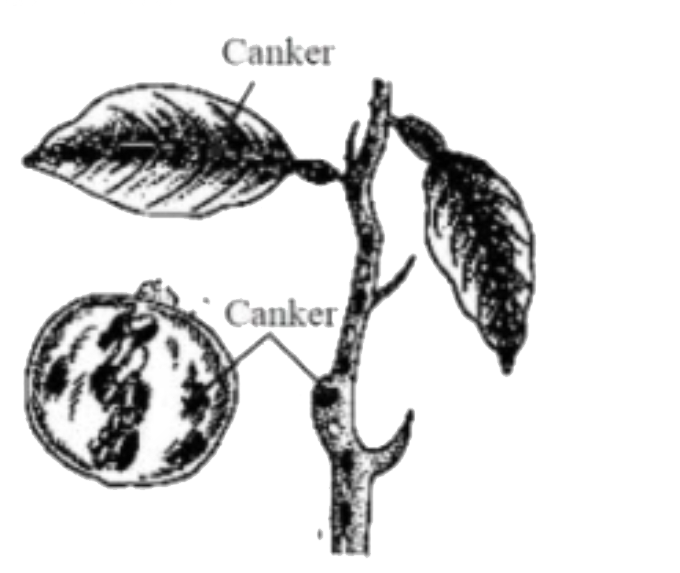Suppose the medium in the previous question is water. Select the correct option s from the list given in that question.
The correct Answer is:A, D
To solve the problem, we need to analyze the situation involving three observers (A, B, and C) measuring the speed of light in water. Let's break down the steps to find the relationship between their measured speeds.
1. Understanding the Setup:
- Observer A is moving towards the light source.
- Observer B is stationary.
- Observer C is moving away from the light source.
- The medium is water.
2. Speed of Light in Different Mediums:
- The speed of light in a vacuum is constant, but in a medium like water, it is affected by the motion of the observer relative to the medium.
- The speed of light in water is less than in vacuum, but the perceived speed will change based on the observer's motion.
3. Analyzing Observer A:
- Since observer A is moving towards the source, the speed of light measured by A (VA) will be greater than the speed measured by B (VB), who is stationary. Thus, we can write:
VA>VB
4. Analyzing Observer C:
- Observer C is moving away from the source. Therefore, the speed of light measured by C (VC) will be less than the speed measured by B (VB). Thus, we can write:
VB>VC
5. Combining the Relationships:
- From the above two inequalities, we can combine them to get:
VA>VB>VC
6. Equal Magnitudes of VA and VC:
- The problem states that the magnitudes of the speeds of A and C are equal but in opposite directions. This means:
|VA|=|VC|
- Since they are in opposite directions, this does not affect the inequality derived earlier.
7. Finding the Average Speed:
- We can express the relationship mathematically. Since VA and VC are equal in magnitude:
VB=VA+VC2
- This shows that the speed of B is the average of the speeds of A and C.
Conclusion:
From the analysis, we conclude that:
- The correct relationship is:
VA>VB>VC
- Additionally, we have:
VB=VA+VC2
Final Answer:
- The correct options are:
- Option A: VA>VB>VC
- Option B: VB=12(VA+VC)
- Observer A is moving towards the light source.
- Observer B is stationary.
- Observer C is moving away from the light source.
- The medium is water.
- The speed of light in a vacuum is constant, but in a medium like water, it is affected by the motion of the observer relative to the medium.
- The speed of light in water is less than in vacuum, but the perceived speed will change based on the observer's motion.
- Since observer A is moving towards the source, the speed of light measured by A (VA) will be greater than the speed measured by B (VB), who is stationary. Thus, we can write:
VA>VB
- Observer C is moving away from the source. Therefore, the speed of light measured by C (VC) will be less than the speed measured by B (VB). Thus, we can write:
VB>VC
- From the above two inequalities, we can combine them to get:
VA>VB>VC
- The problem states that the magnitudes of the speeds of A and C are equal but in opposite directions. This means:
|VA|=|VC|
- Since they are in opposite directions, this does not affect the inequality derived earlier.
- We can express the relationship mathematically. Since VA and VC are equal in magnitude:
VB=VA+VC2
- This shows that the speed of B is the average of the speeds of A and C.
From the analysis, we conclude that:
- The correct relationship is:
VA>VB>VC
- Additionally, we have:
VB=VA+VC2
- The correct options are:
- Option A: VA>VB>VC
- Option B: VB=12(VA+VC)
Topper's Solved these Questions
- LIGHT WAVESBOOK - HC VERMA ENGLISHCHAPTER - LIGHT WAVESEXERCISE - Exercises
41 Videos
- LIGHT WAVESBOOK - HC VERMA ENGLISHCHAPTER - LIGHT WAVESEXERCISE - Question for short Answer
11 Videos
- LIGHT WAVESBOOK - HC VERMA ENGLISHCHAPTER - LIGHT WAVESEXERCISE - Objective -1
17 Videos
- GEOMETRICAL OPTICSBOOK - HC VERMA ENGLISHCHAPTER - GEOMETRICAL OPTICSEXERCISE - Question For short Answer
18 Videos
- MAGNETIC FIELDBOOK - HC VERMA ENGLISHCHAPTER - MAGNETIC FIELDEXERCISE - objective2
9 Videos
Similar Questions
Knowledge Check
Match the two columns and select the correct option from the codes given below.
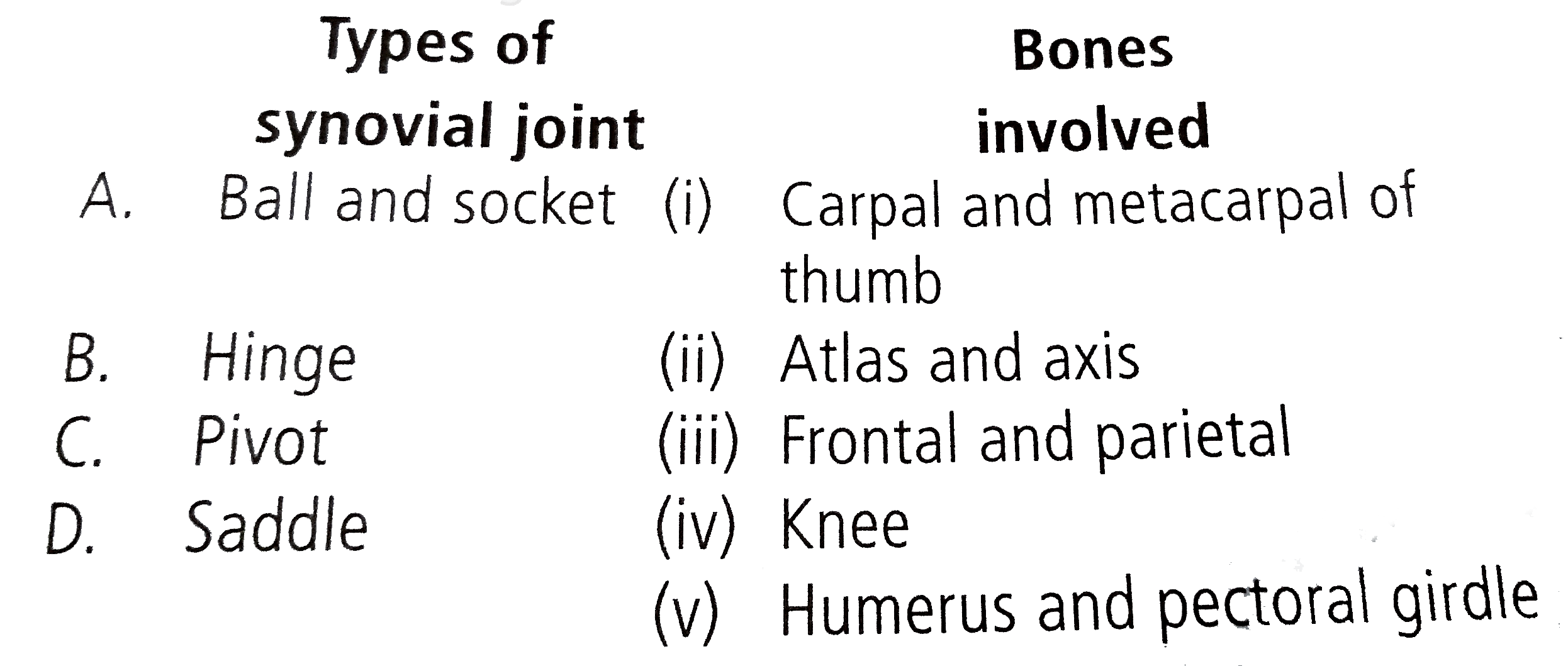 AA-(v),B-(iv),C-(ii),D-(i)BA-(i),B-(iii),C-(iv),D-(v)CA-(v),B-(iv),C-(iii),D-(i)DA-(i),B-(ii),C-(v),D-(iv)
AA-(v),B-(iv),C-(ii),D-(i)BA-(i),B-(iii),C-(iv),D-(v)CA-(v),B-(iv),C-(iii),D-(i)DA-(i),B-(ii),C-(v),D-(iv)Mathc column I with column II and select the correct option from the given codes.
 AA-(ii), B-(iii), C-(iv), D-(i), E-(v)BA-(v), B-(iv), C-(iii), D-(i), E-(ii)CA-(i), B-(iii), C-(iv), D-(ii), E-(v)DA-(i), B-(iv), C-(iii), D-(ii), E-(v)
AA-(ii), B-(iii), C-(iv), D-(i), E-(v)BA-(v), B-(iv), C-(iii), D-(i), E-(ii)CA-(i), B-(iii), C-(iv), D-(ii), E-(v)DA-(i), B-(iv), C-(iii), D-(ii), E-(v)Mathc column I with column II and select the correct option from the given codes.
 AA-(iii),B-(v), C-(iv),D-(ii)BA-(ii),B-(iv),C-(v),D-(i)CA-(ii),B-(iv),C-(v),D-(iii)DA-(iii), B-(v), C-(iv), D-(i)
AA-(iii),B-(v), C-(iv),D-(ii)BA-(ii),B-(iv),C-(v),D-(i)CA-(ii),B-(iv),C-(v),D-(iii)DA-(iii), B-(v), C-(iv), D-(i)
Match List I and List II and select the correct option
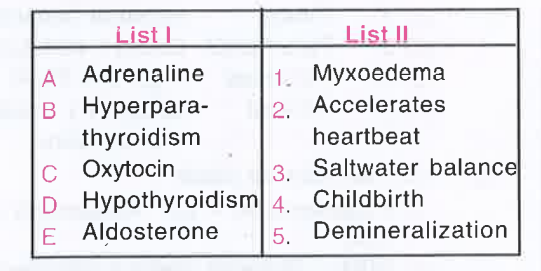
View SolutionMatch the List I with List II and select the correct option.
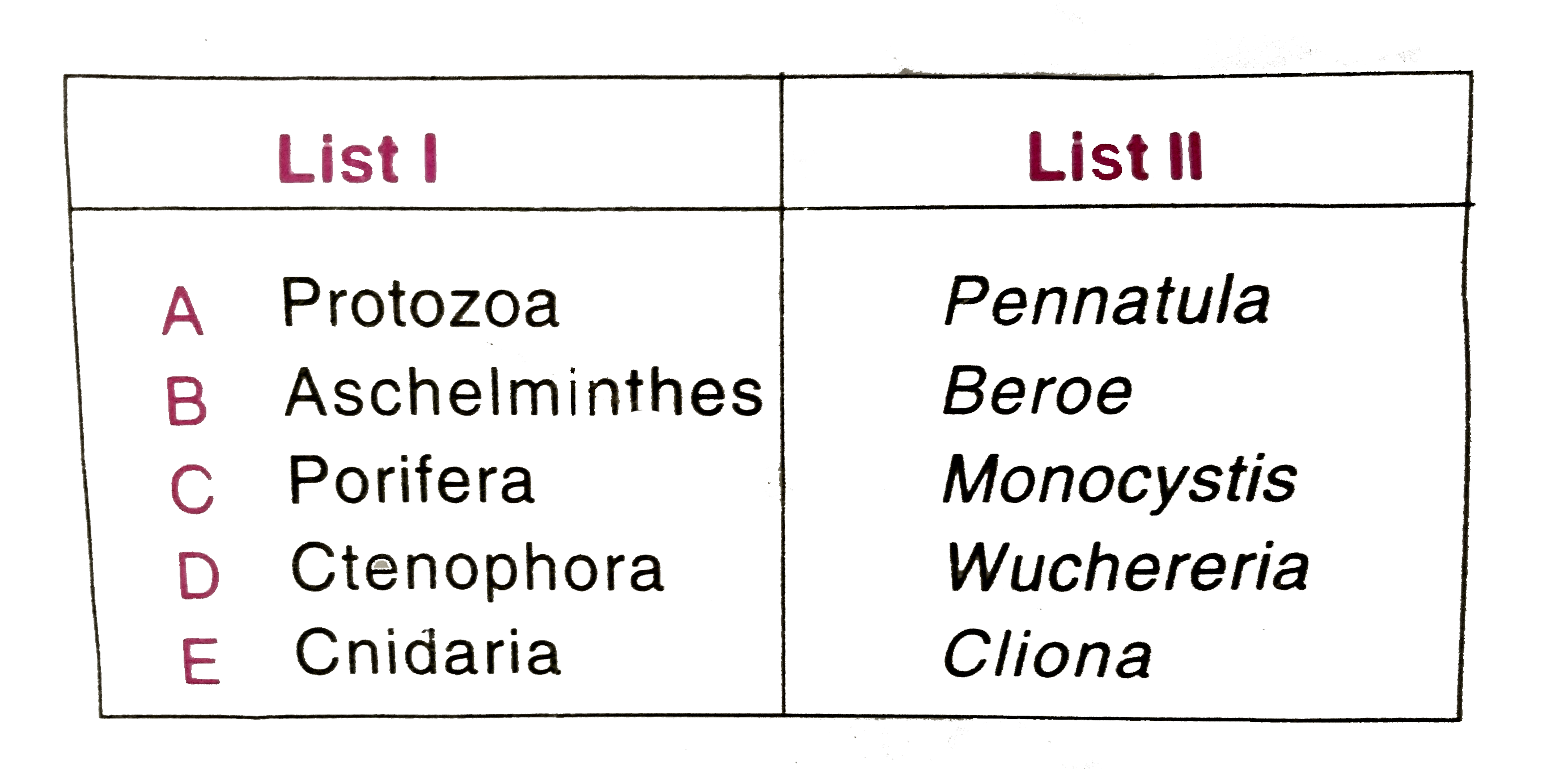
View Solution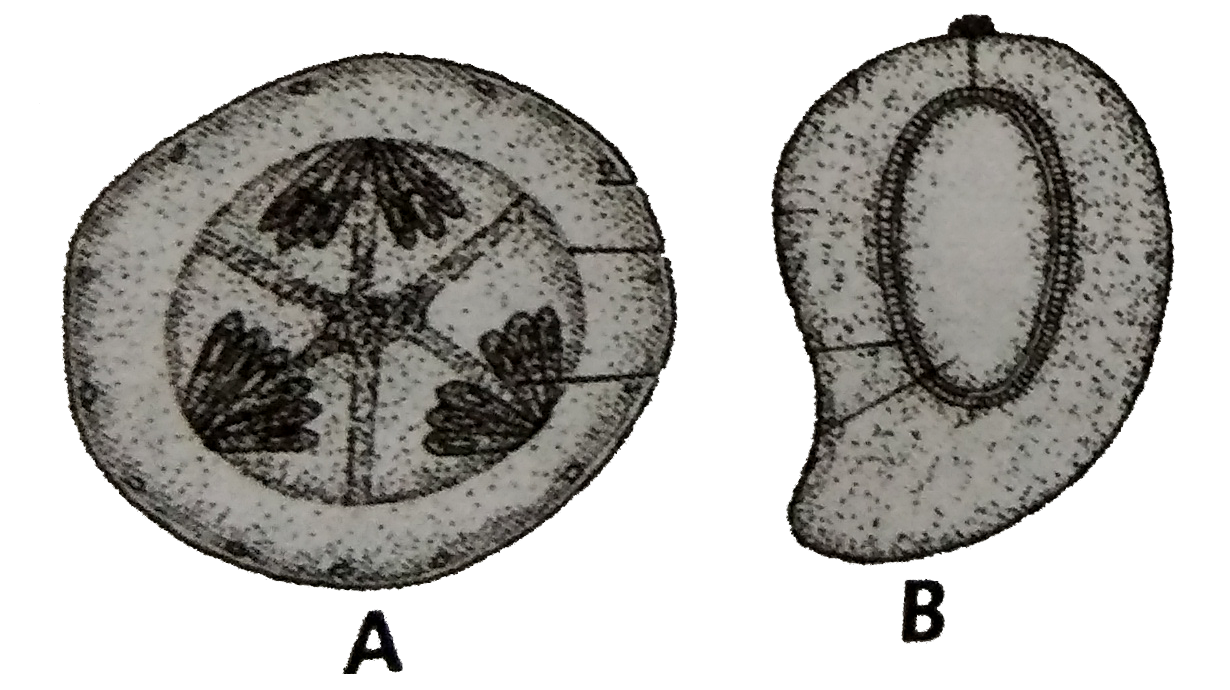
Identify the given types of fruit select the correct option.
View SolutionMatch list I with list II and select the correct option
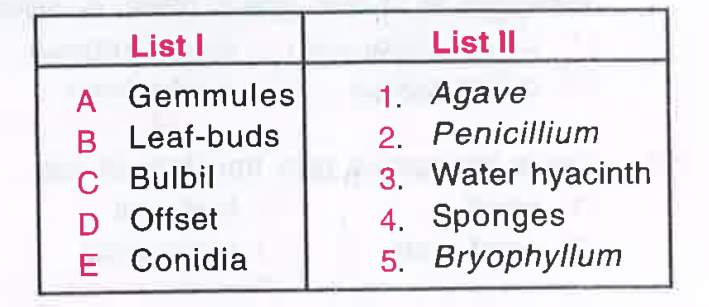
View SolutionMatch column I and II and select the correct option from the given codes.

View Solution

